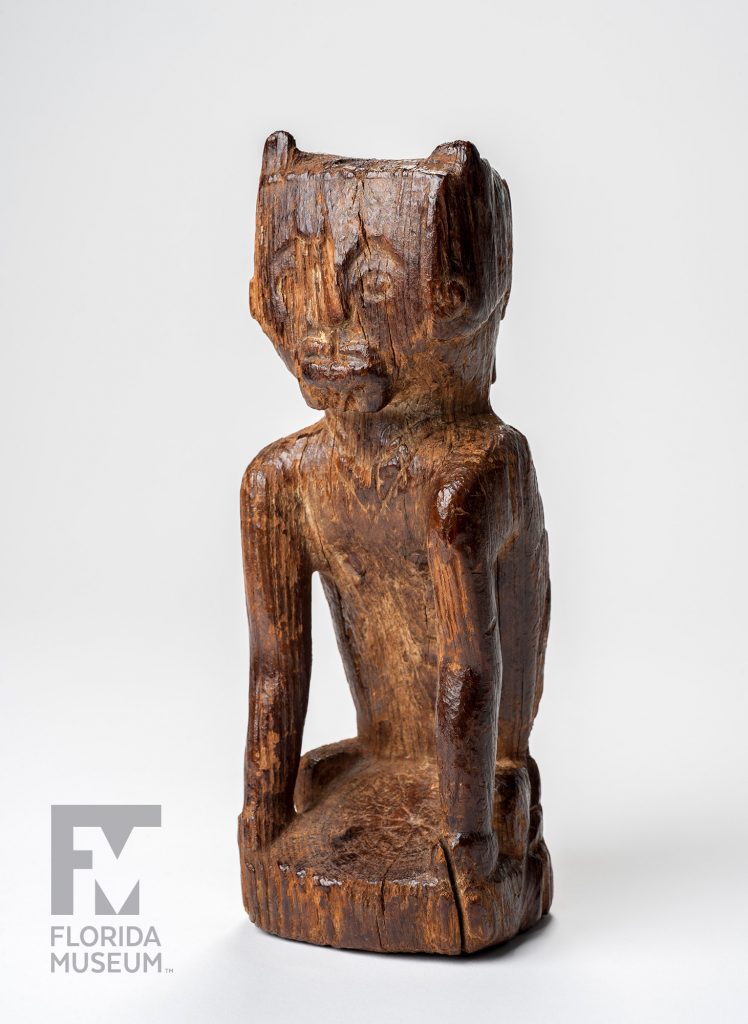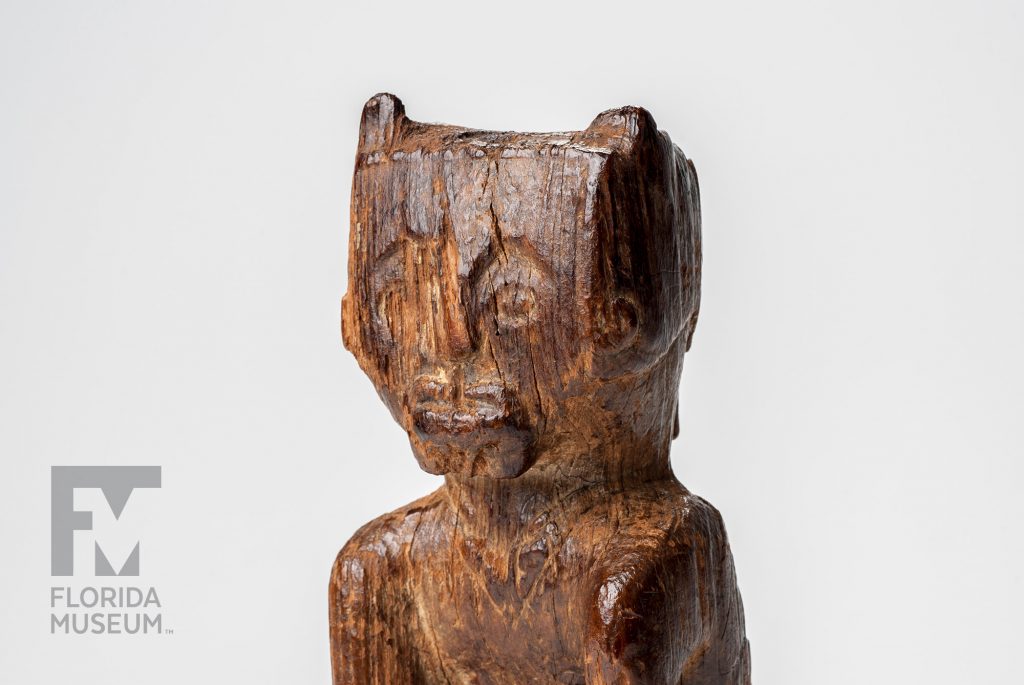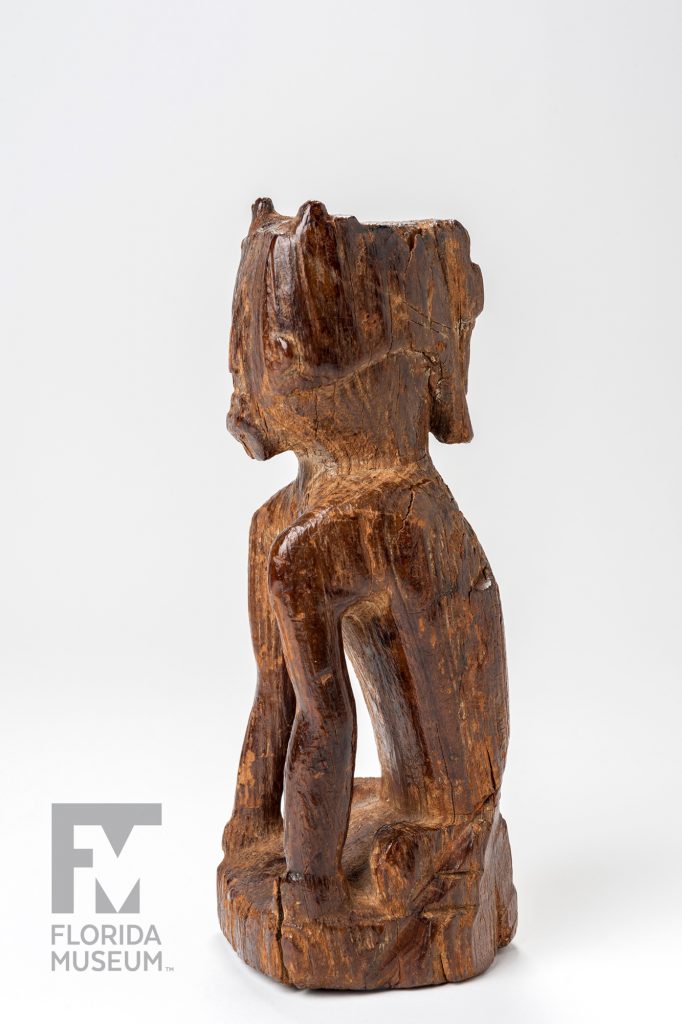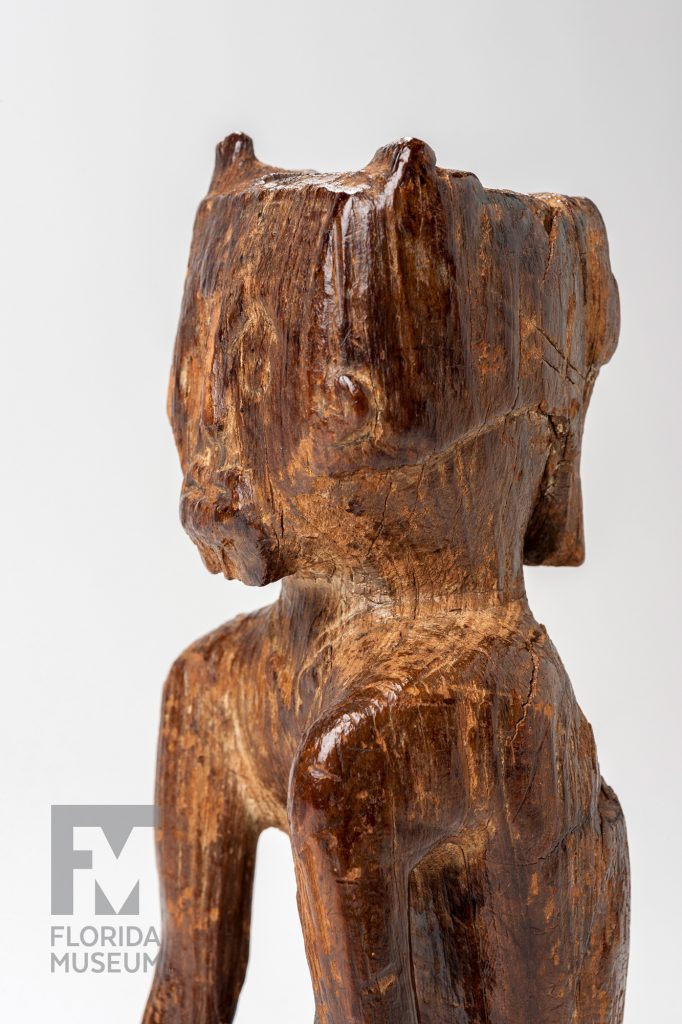This rare wooden figurine probably depicts a kneeling performer wearing a cat-like mask, one of only four such figurines known. Discovered early in the 1920s by Robert Padgett, it recently came to the Museum via his descendants.
Summary
Wooden Figurine
Made by Belle Glade people, Glades Co., Florida
Dates to ~AD 1000–1500
Collection
Story
This figurine is carved from a single piece of wood and appears to be a human with short legs, kneeling on a platform, with the arms resting on the base in front of the knees. These figurines are quite rare – only about a dozen are known – and this one donated by the Padgett family is in excellent condition.
The head is squarish, with well-defined features. It has round eye sockets with oval eyes and arching eyebrows. His nose is straight. A lip bead may be present in the central part of the lower lip. Over his head he is wearing a headdress or mask which doesn’t cover his face, and you can see cat-like ears protruding from the front. There are round protuberances on opposite sides that suggest ears or ear ornaments underneath the headdress. You can see a hair bun on the back of the head.
One of the reasons you can tell he is wearing a mask is the pair of narrow lines on either side of the head. We think this is a cord for attaching the headdress. Although the legs are short, the torso and shoulders are robust. The chest is bare; nipples but not developed breasts are shown, so that’s why we think it’s a male. He has a belt at the waist, with a central ornament on the belt at the rear. He has a triangular ornament on his chest, possibly a pendant suspended from a cord around his neck. Otherwise, he doesn’t seem to be wearing any clothing.
We really don’t know how this statuette was used or whether it had religious or spiritual significance. Some Native Americans believe that the world is populated with persons, but not all persons are human. In other words, there are “other-than-human” persons. So, animals of the forest such as bears, or panthers, or wolves are not just dumb animals—they can have reason and knowledge. They can speak to people in dreams and can share their wisdom with humans. To get into this kind of state, you have to partake in the proper ritual. So anyway, one idea about these figurines is that they may represent a person involved in experiencing the perceptions of a non-human person through a transformation. Hence the submissive pose and the cat-like mask that this figurine is wearing.
Bill Marquardt
Curator, South Florida Archaeology & Ethnography*
Director, Randell Research Center*
Florida Museum of Natural History
Exhibit
On display Sept. 23, 2017-Jan. 7, 2018, Rare, Beautiful & Fascinating: 100 Years @FloridaMuseum celebrated the Museum’s rich history. Each Museum collection was asked to contribute its most interesting items and share the stories that make them special. Though the physical exhibit is closed, this companion website remains online, providing an opportunity to experience the Florida Museum’s most treasured specimens.
Exhibit Area: Objects Tell Stories
Theme: Precolumbian Florida
 Want to see more? Explore more than 300 breathtaking color photos of plants, animals, fossils and cultural heritage materials from the Florida Museum of Natural History’s collections in the award-winning book All Things Beautiful available from the University Press of Florida.
Want to see more? Explore more than 300 breathtaking color photos of plants, animals, fossils and cultural heritage materials from the Florida Museum of Natural History’s collections in the award-winning book All Things Beautiful available from the University Press of Florida.
*This title was accurate at the time the exhibit was on display in 2017. Please visit the collection website to verify current staff and student information.



